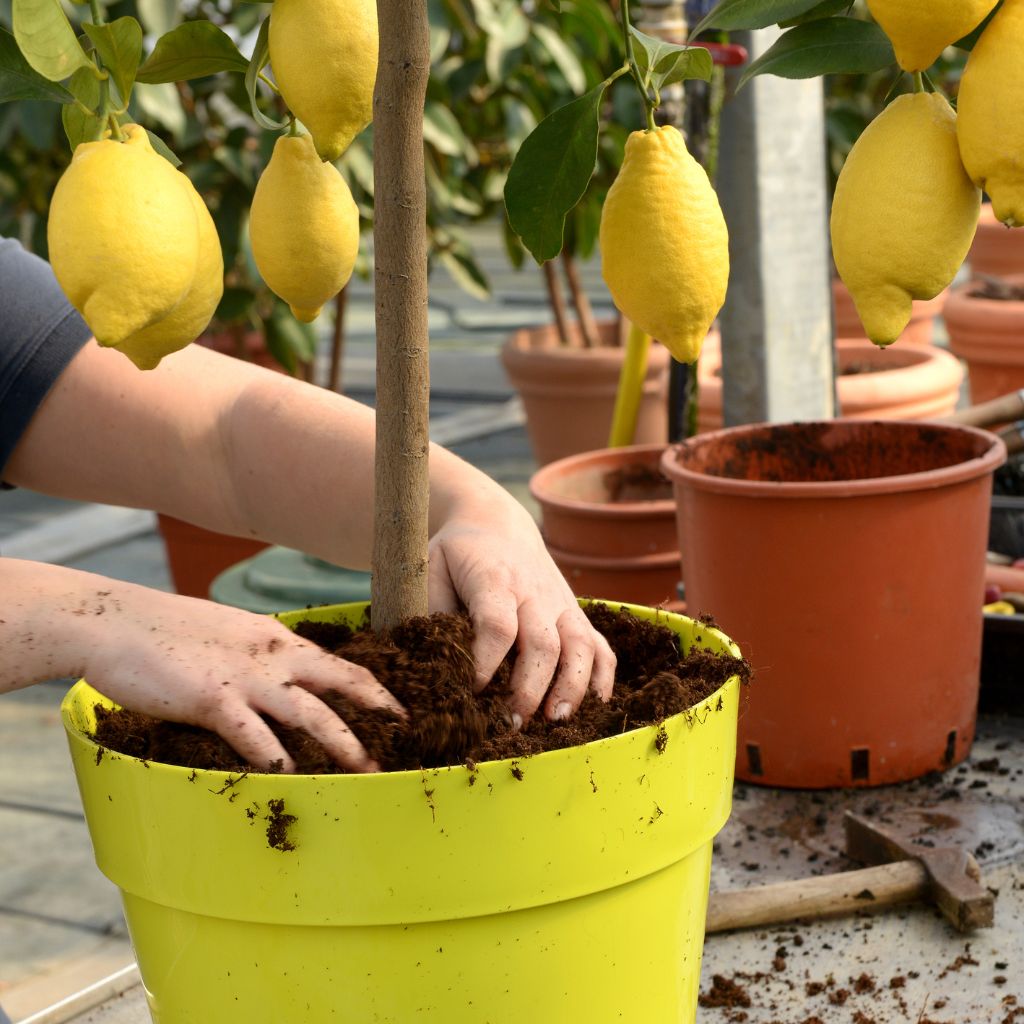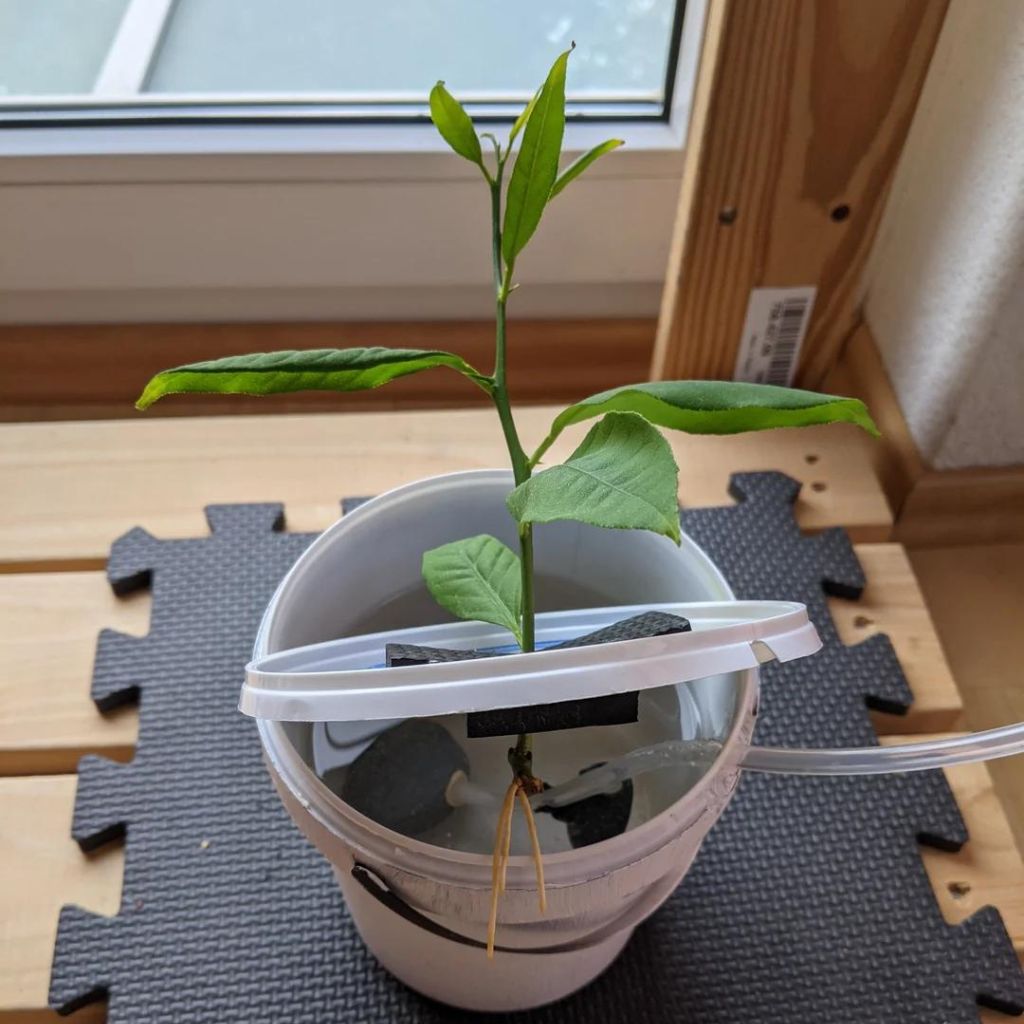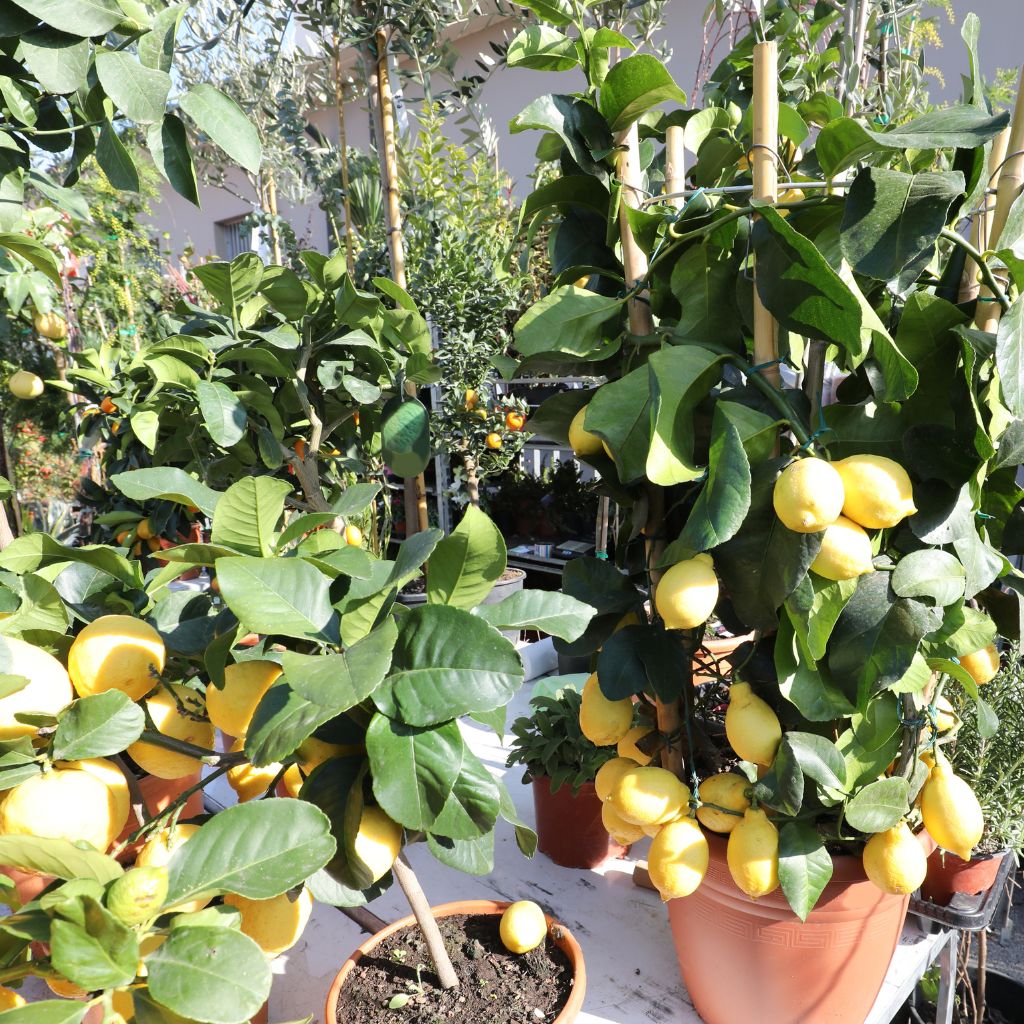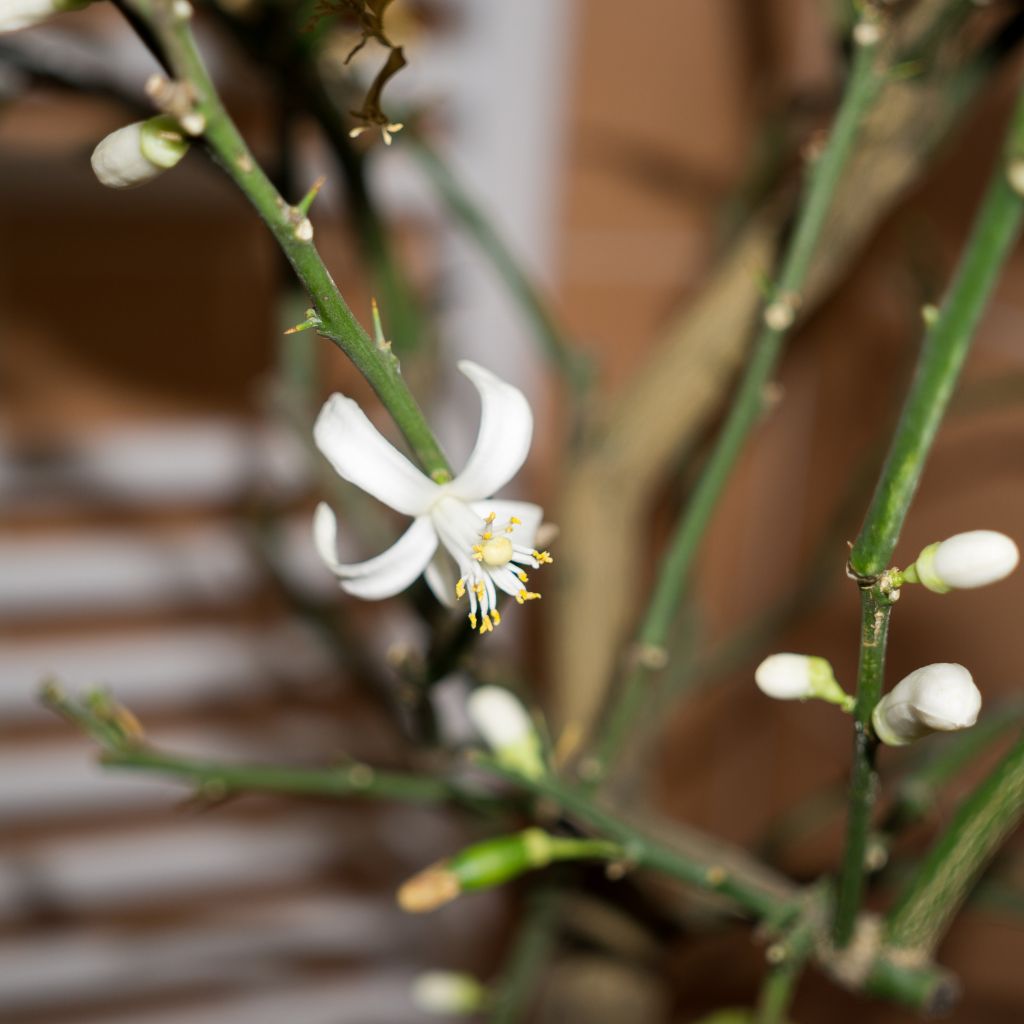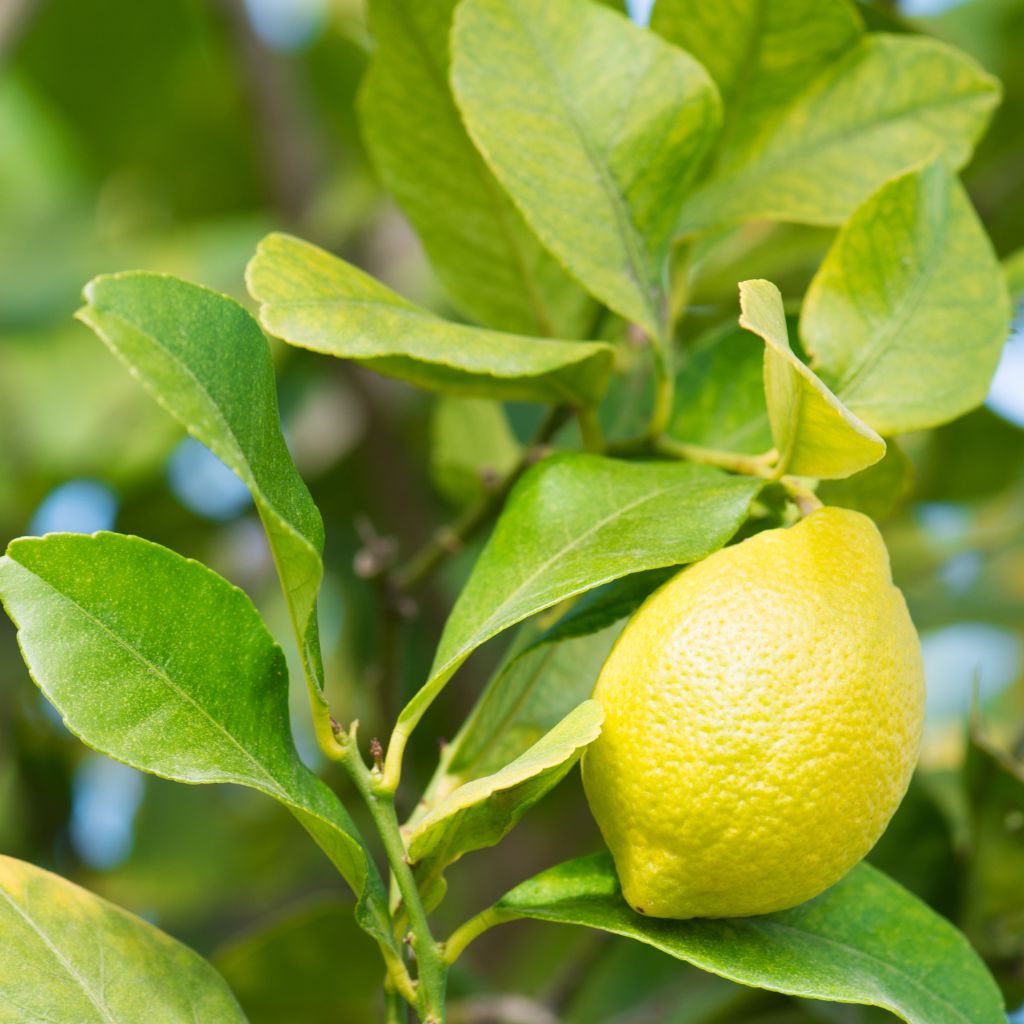Growing your own lemons can be a rewarding experience, and it’s easier than you might think.
Imagine stepping outside to pick fresh lemons from your own tree. With a few simple steps, you can achieve just that, even if you don’t have a garden.
Benefits of Growing Lemons from Cuttings
Growing lemons from cuttings offers several advantages for your gardening journey.
Cost-Effective
You can produce new plants without purchasing seeds or young trees. This method is a budget-friendly way to expand your garden.
Faster Growth
Cuttings often root and grow faster than seeds. You’ll enjoy your first lemons much sooner, which adds instant gratification to your gardening efforts.
Consistency
Cuttings preserve the characteristics of the parent plant. This means you can maintain the same flavor and quality of lemons you love.
Simplicity
The process of rooting cuttings is straightforward. With minimal supplies, you can get started easily in your home.
Space-Saving
If you’re limited on space, growing from cuttings allows for smaller plants. You can fit more lemon trees in your garden or containers.
Increased Success Rate
Many gardeners find higher success rates with cuttings compared to seeds. Fewer failed attempts mean more thriving lemon plants for you.
Enhanced Variety
You can experiment with different varieties that you might not find at local nurseries. This allows for a unique lemon collection in your garden.
Understanding Lemon Plant Basics
Growing lemon plants can be a rewarding experience. They thrive best in warm climates but can also adapt to indoor environments.
Lemon Varieties
Some popular lemon varieties include:
- Eureka
- Lisbon
- Meyer
Each type has unique flavors and growing conditions.
Light Requirements
Lemon plants need plenty of sunlight. Aim for at least 8-10 hours of direct light daily.
Soil Preferences
Use well-draining soil to prevent root rot. A mix that includes:
- Potting soil
- Sand
- Perlite
This combination provides essential drainage.
Watering Tips
Keep the soil moist, but not soggy. Water when the top inch of soil feels dry.
Temperature Needs
Lemons enjoy warm temperatures, ideally between 70°F and 85°F. Protect your plants from frost or extreme cold.
Fertilizing
Feed your lemon plant every 4-6 weeks during the growing season. Use a balanced fertilizer to promote healthy growth.
Selecting the Right Lemon Variety
Choosing the right lemon variety is crucial for successful growth. Different varieties have unique characteristics and growth requirements. Here are some popular options you might consider:
- Eureka: Known for its bright flavor, it’s a prolific producer. This variety thrives in warm climates.
- Lisbon: Similar to Eureka, but with slightly fewer thorns. It’s also very hardy and adaptable.
- Meyer: A cross between a lemon and a mandarin orange. You get a sweeter taste and a smaller size, perfect for compact spaces.
- Ponderosa: Produces large lemons with a thick skin. It’s a bit more tropical and requires more care.
When selecting a variety, think about your climate and space. Some lemons handle colder temperatures better, while others prefer heat. Consider how much sunlight your area receives, too.
Look for cuttings from healthy plants to ensure better growth. Healthy cuttings increase the chance of rooting successfully.
You can also check with local nurseries for varieties that do well in your area. They might recommend specific types known for thriving locally.
Tools and Materials Needed
To successfully grow lemons from cuttings, gather the following tools and materials:
- Lemon Cuttings: Select healthy, green cuttings from a mature lemon tree.
- Sharp Knife or Pruning Shears: Ensure a clean cut to avoid damaging the plant.
- Potting Soil: Use a well-draining potting mix to encourage growth.
Containers
- Pots: Choose containers with drainage holes. This prevents waterlogging.
- Plastic Bags or Cling Film: To create a humid environment for the cuttings.
Water
- Watering Can or Spray Bottle: Keep the soil moist without overwatering.
Optional Items
- Rooting Hormone: Helps stimulate root growth but is not mandatory.
- Grow Light: Useful if natural light is limited for optimal growth.
Labels
- Plant Labels: Keep track of your cuttings and their planting dates.
Preparing Your Lemon Cuttings
To successfully grow lemons from cuttings, start by selecting healthy, young branches. Look for shoots that are about 4 to 6 inches long and have at least two to three leaves.
Steps to Prepare Your Cuttings:
- Make the Cut: Use sharp, sterilized pruning shears to make a clean cut just below a node. This increases the chance of rooting.
- Remove Lower Leaves: Strip off the leaves from the bottom half of the cutting. This prevents rot when you plant them.
- Optional – Apply Rooting Hormone: Dip the cut end in rooting hormone to promote root growth. This step can be beneficial but isn’t necessary.
- Caring for Cuttings: Keep your cuttings in a jar of water or plant them directly in a well-draining potting mix. Ensure they get indirect sunlight.
Things to Remember:
- Timing: The best time to take cuttings is in late spring or early summer when the plant is actively growing.
- Environment: Maintain a warm, humid environment to help the cuttings root. You can cover them with a plastic bag to create a mini greenhouse effect.
With these steps in mind, you’re ready to start your lemon growing adventure!
Rooting the Lemon Cuttings
Rooting lemon cuttings is a simple process that can yield fruitful results. Start by taking healthy cuttings from a mature lemon tree. Ideally, each cutting should be about 4-6 inches long.
Steps for Rooting:
- Prepare the Cuttings: Remove the leaves from the bottom half of the cutting. This helps reduce moisture loss.
- Use Rooting Hormone: Dip the cut end in rooting hormone to encourage root growth. This step can increase your chances of success.
- Plant the Cuttings: Place the cuttings in a well-draining potting mix. Make a hole and gently insert the cutting.
Watering and Light:
- Watering: Water the cuttings lightly but don’t soak them. Keep the soil moist but not soggy.
- Light: Place the pot in a location with indirect sunlight. Too much direct sun can scorch the cuttings.
Creating Humidity:
To boost rooting, cover the pot with a plastic bag or place it in a mini greenhouse. This will help maintain humidity around the cuttings.
Check for Roots:
After a few weeks, gently tug on the cuttings. If you feel resistance, roots are forming! You can transplant them to larger pots once they’ve established strong roots.
With patience, you’ll soon have new lemon trees ready to thrive!
Planting Your Rooted Cuttings
Once your lemon cuttings have developed roots, it’s time for the next steps. Proper soil, potting techniques, and appropriate transplanting methods are crucial for your cuttings to thrive.
Choosing the Right Soil
For lemon cuttings, a well-draining soil is essential to promote healthy growth. You can use a mixture of potting soil and perlite in a 1:1 ratio, which helps with aeration and drainage.
Alternatively, a soil blend specifically designed for citrus can also work well. Look for options that retain moisture without becoming soggy, avoiding any soil that is too heavy. A pH level between 6.0 and 7.0 is optimal for lemon plants.
Before planting, ensure the mix is moist but not soaked, allowing your rooted cuttings to establish themselves comfortably.
Potting and Initial Care
Select a pot that has drainage holes to prevent waterlogging. A 6 to 8-inch container is usually adequate for your rooted cuttings. Fill the pot with your chosen soil mix, leaving enough space for the cutting.
After gently placing the cutting in the pot, fill in around the base, ensuring the roots are covered but not buried too deep.
Water the plant lightly to settle the soil, allowing excess water to drain out.
Place your pot in a location that receives at least 6 hours of sunlight daily, like a south-facing window, to encourage growth.
Transplanting to a Permanent Location
Once your lemon plant becomes root-bound or grows tall enough, it’s time to transplant it. Choose a larger pot or an outdoor garden space where it can thrive.
Consider soil preparation; mix in compost to boost nutrients for your lemon tree. The new spot should be well-draining and receive full sunlight to promote optimal growth.
When moving your plant, carefully remove it from its current container. Gently loosen any tightly bound roots.
Place the plant in the new hole or pot, ensuring that the root ball is at the same depth as before. Water thoroughly after planting to help settle the soil around the roots and remove any air pockets. This will provide a smooth transition for your lemon plant.
Encouraging Flowering and Fruiting
To inspire your lemon cuttings to flower and bear fruit, proper care is essential. Start by ensuring they receive enough sunlight. Aim for at least 8 hours of bright, indirect light daily.
Watering plays a crucial role in the growth process. Water your plants when the top inch of soil feels dry. Avoid overwatering; soggy soil can stunt their growth.
Fertilizing is another key factor. Use a balanced fertilizer every 4-6 weeks. Citrus-specific fertilizers can provide essential nutrients that support blooming and fruiting.
Humidity and temperature also influence flowering. Maintain humidity around 50-60% and keep temperatures between 70°F to 85°F during the day. Consider misting your plants to increase humidity.
Lastly, pruning encourages better air circulation and light exposure. Remove any crowded or unhealthy branches. This helps your lemon plants to focus energy on producing blossoms and fruit.
By following these guidelines, you can create an environment where your lemon cuttings thrive, leading to a bountiful harvest of delicious lemons.





